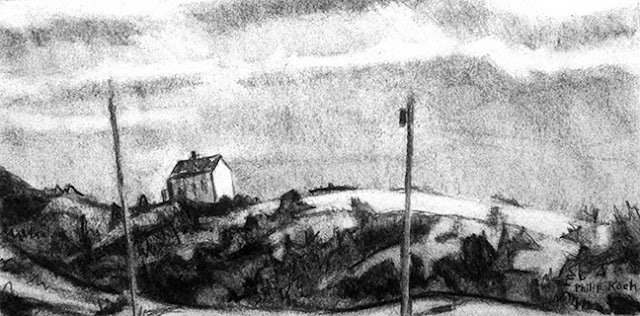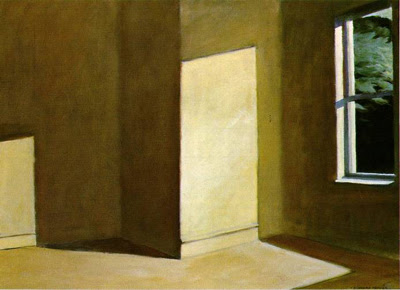Finding the Path

As a boy I used to go on long walks through the deep woods with my dad. An explorer at heart, he loved to go a different way each time. Part of the fun was getting lost and searching out a new trail. I remember asking him who it was who had made the meager little trails we were following and why hadn't they made them wider and easier to follow? I was amazed to hear they were the trails made by the animals who lived in the forest. Cleared gradually with each passing hoof or paw following the line of least resistance through the thickets. Over time, a pathway formed.
Artists are followers too. One that I followed at a critical time in my study was the early British master of the landscape, John Constable (1776-1837). Above is one of his paintings, Deadham Mill, that was a particular favorite of mine when I took my first tentative steps with painting plein air landscapes in graduate school in the hills of southern Indiana in Bloomington.
Why Constable? More than anything else it was his trees. They looked to me the way I remembered the trees looking in the forested lakeshore where I grew up in Webster, NY. There were other artists like the French impressionists who struck me as more exciting colorists than Constable, but somehow the crusty Englishman's browns and greens felt more authentic to my own experience. None of this was conscious at the time, but I was in the process of marrying my own memories to the traditions of painting. Finding echoes of how the world looked to my own eye was at this point critical.
What was stopping me with my early landscapes was how to describe the trees without getting stuck in the myriad details. My first attempts looked like forests of melting natural sponges. I got an inspiration one night that it might be fun to try copying a Constable from the little paperback I'd purchased at the University's bookstore. I chose Deadham Mill for the rhythms in its foreground trees. What I realized Constable was doing that I'd never tried was to build his trees up in layers of differing hues. It was an abrupt change from the previously housepainter-like approach I had been using. Sometimes there is magic released when you let the viewer glimpse what lies beneath the surface.
The first copy turned out so well I then faithfully copied the Constable below, The Cottage in a Cornfield.
Years ago copying was at the core of the art student's activity but gradually this has all but faded away. The fear is of course that it will hold back the younger artist's imagination. I think this fear is justified, but only half right. Knowing my personality I probably would have refused if I had been assigned to copy some master's painting. But if I decided to give myself the assignment it was a different story.
None of us is so bright that we're the first and only to feel something brand new. There are artists out who have gone down the path, at least part of the way, for us. Like the deer in the forests of my childhood, they can show us at least part of the way we need to go.



